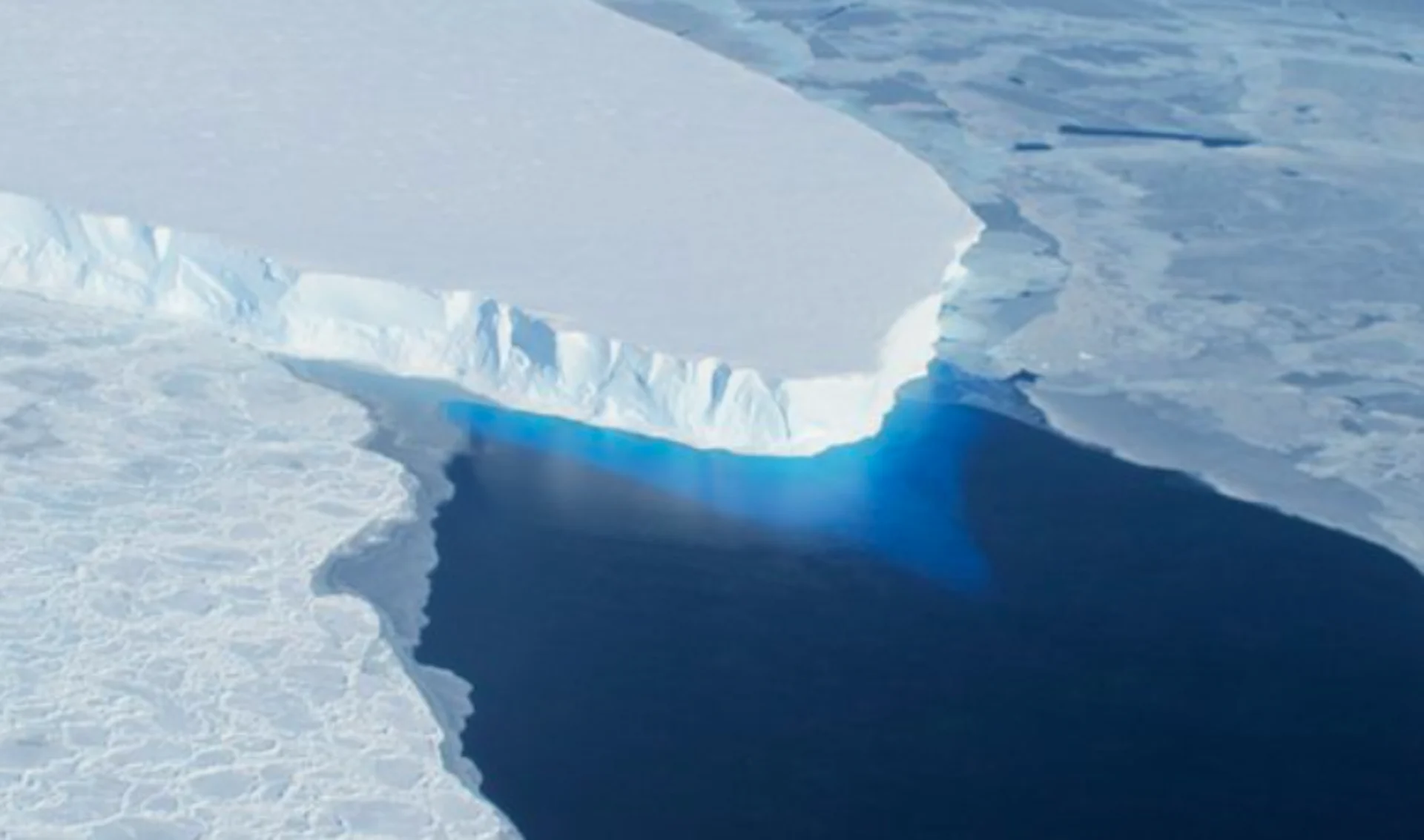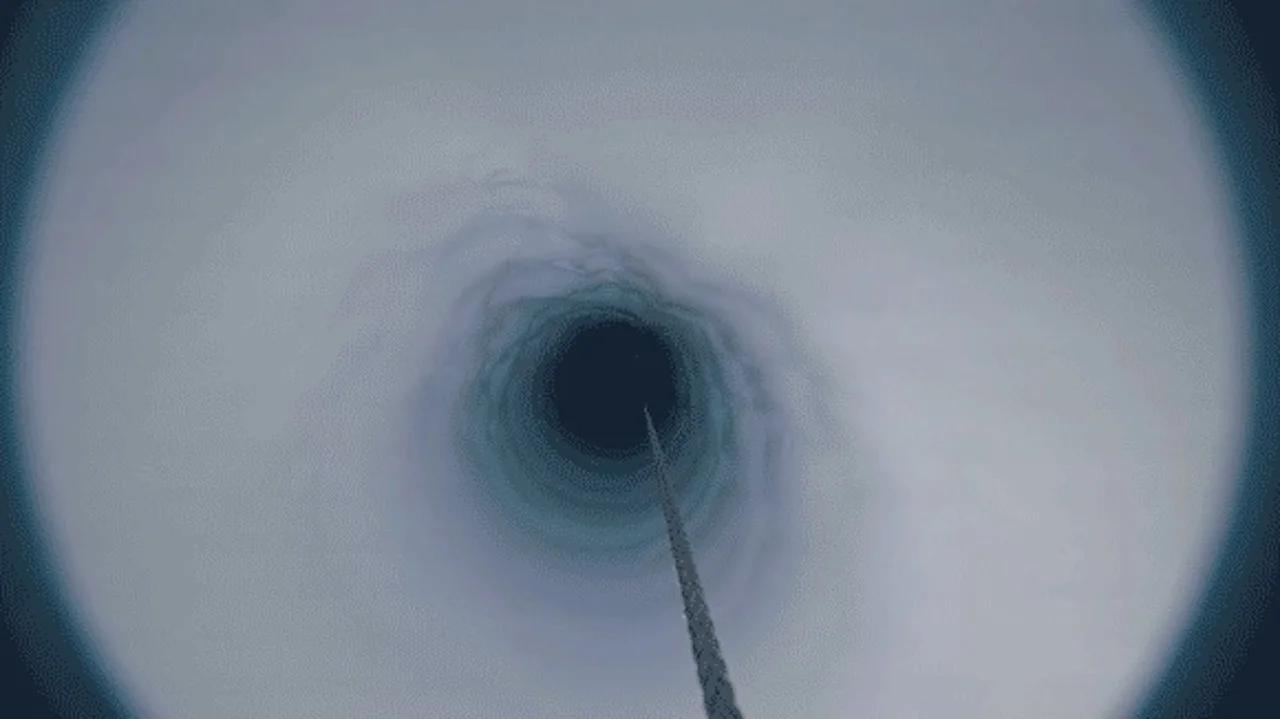
Visual evidence warm sea water is pushing under doomsday glacier: Study
Scientists are warning a melting glacier near Antarctica could lead to catastrophic conditions in the next 20 years.
Warm sea water is pushing underneath the Thwaites Glacier, also dubbed the doomsday glacier, which is causing sea levels to rise. A new report from an international team of scientists, published in Proceedings of the National Academy of Sciences, says for the first time, there's visible evidence showing this is happening.
DON'T MISS: Why Antarctica's "Doomsday Glacier" could partially collapse within 5 years
"This is really bad news for the glacier because anytime you have ocean water underneath the ice, that's melting it much faster than it would do otherwise," says Christine Dow, who is on a team of researchers at the University of Waterloo who are monitoring the melt. Dow is also the Canadian Research Chair, Glacier Hydrology and Ice Dynamics.
The glacier is massive — about 120 kilometres across and covers an area of 192,000 square kilometres.
"You can imagine it like a big lump of ice sitting in a bowl. And at the moment, that ice is all the way up to the end of the bowl. So you can't get water in particularly far," Dow said during an interview on CBC Kitchener-Waterloo's The Morning Edition with host Craig Norris.
"But as soon as you start losing ice into the bowl, it becomes easier and easier to get the water in. That water can float the ice on top and so at that point, we start losing ice very, very rapidly."

(NASA/James Yungel)
Dow says coastal communities will see the effects of this first, with rising sea levels.
"We remember last year in New Orleans there was a lot of flooding. That's very close to sea level. Other areas such as Miami, Bangladesh are going to have lots of problems. And of course, these South Pacific low lying islands that are only a couple of metres above sea level rise," she said.
"Anytime you get more than a few centimetres, all of these areas are going to suffer. And Vancouver is going to be next on the list. They're not very far above sea level, either."
Use of satellite data, water models
Dow and other Waterloo researchers have been working on creating new models around ocean water flows and the glacier's melt. The international team used satellite data from microsatellite manufacturer ICEYE in Finland along with subglacial water modelling to figure out where sea water was getting under the glacier and what impact it was having.
Dr. Eric Rignot, lead author and professor of Earth system science at the University of California, Irvine, said in a media release on the school's website that in the past, researchers have had access to data sporadically.
"With just those few observations it was hard to figure out what was happening. When we have a continuous time series and compare that with the tidal cycle, we see the seawater coming in at high tide and receding and sometimes going farther up underneath the glacier and getting trapped," he said. "We're beginning to witness this tidal dynamic for the first time."
Michael Wollersheim is ICEYE's director of analytics and a co-author on the paper. He said the satellites are able to provide "centimetre-level precision" in its measurements, which can show daily changes in what's happening on the glacier.
Need for more research
Rignot says it's hoped the results will lead to more research on the changes taking place under glaciers in Antarctica.
"There is a lot of enthusiasm from the scientific community to go to these remote, polar regions to gather data and build our understanding of what's happening, but the funding is lagging," Rignot said.
"We operate at the same budget in 2024 in real dollars that we were in the 1990s. We need to grow the community of glaciologists and physical oceanographers to address these observation issues sooner rather than later, but right now we're trying to climb Everest in tennis shoes."

This image, provided by the British Antarctic Survey, shows the view as Icefin is deployed through a borehole drilled into the Thwaites Glacier, to capture images of the ice from below. (Icefin/ITGC/Schmidt)
Dow says it's inevitable that sea levels will rise.
"There's no way back from that at the moment," she said.
But if action can be taken to address carbon emissions, it could slow the rate at which the climate is changing and delay the impacts of the melt.
She added that while Antarctica will seem very far away for many people, it's important to recognize change is happening and it will, at some point, affect everyone.
"As soon as you start melting that ice, it is the global sea levels, they're going to be affected. And that's not just coastal change. That's going to affect ocean currents, which is going to affect the air above it, which is going to affect how our air is moving over the country and affecting rain and droughts," she said.
"The whole climate system is connected and we definitely can't ignore the Antarctic, even though it's so far away."
WATCH: Why these iconic blue lakes in Canada are losing their colour
Thumbnail courtesy of NASA.
The story was originally written by Kate Bueckert and published for CBC News.











